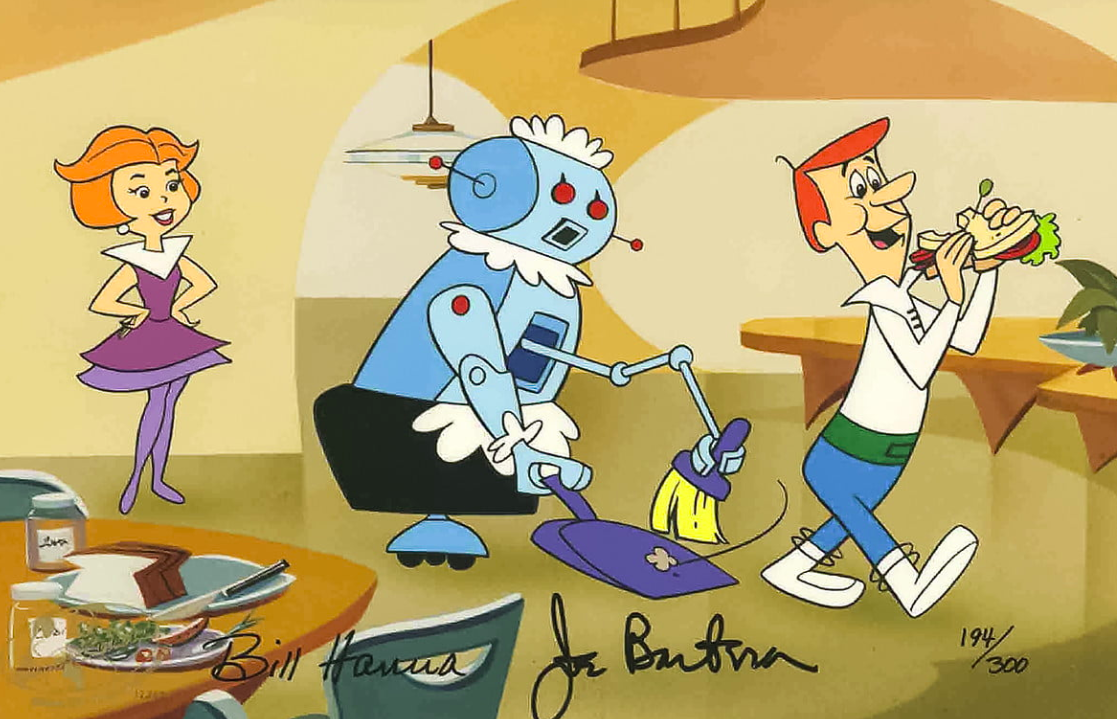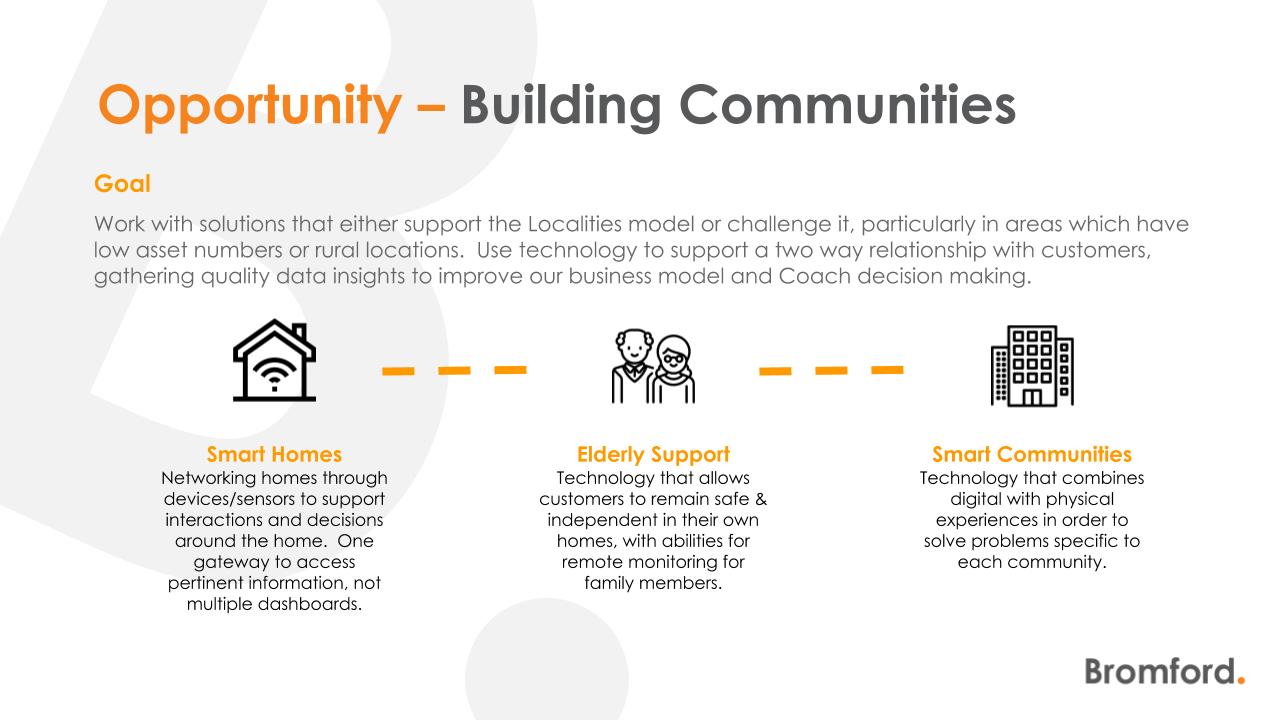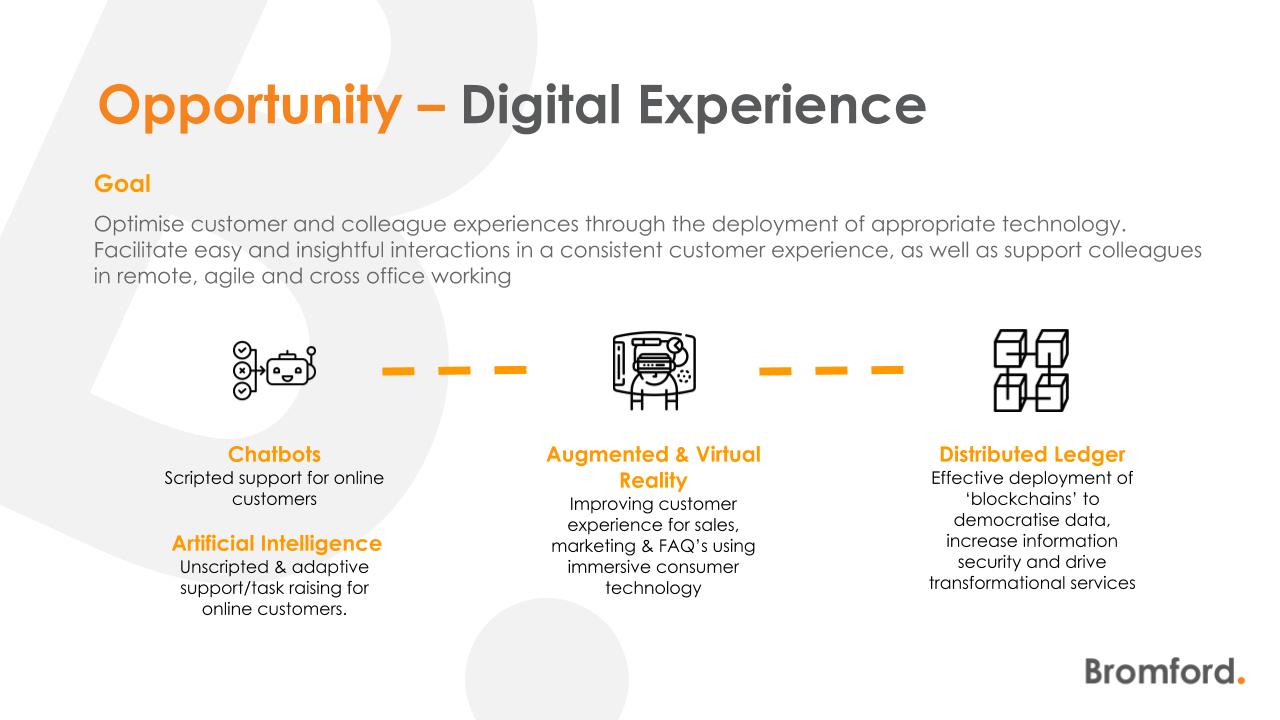“The advance of technology is based on making it fit in so that you don’t really even notice it, so it’s part of everyday life.”
Let’s be honest, people have been banging on about IoT for ages. You can’t move on Twitter without someone talking about it and conferences across all sectors are packed with businesses selling such solutions or talking about why you should be excited by it.
But, like 3D printers, Bitcoin and all the other much hyped technologies of recent years, we aren’t as far along the adoption cycle as we perhaps imagined.
For clarity (and those that have no idea what the hell I’m on about), IoT (or the Internet of Things in full) in it’s official sense can be defined as follows:
In plain English, I feel it helps to think about it as the ‘Connection of Things’ - using the internet and wireless technologies to connect enabled devices to each other so they can talk and share information. It’s more than just sensors - it’s the Jetson’s style home, just not in the sky, but given that some of the items you know and love, like Alexa, have been around for a number of years now, why aren’t we further along the road?
There are a couple of items to consider around this. Generally speaking, although we have been testing IoT devices here in the Lab for some time now, the market is still quite immature, with the technology not seamlessly fitting into everyday life as Bill Gates advocates. There is always an app, or a dashboard, that you need to be able to get the most out of these solutions, and given that some people could have 2,3,4,5 smart devices installed in their home, no one can be bothered with that. It’s also ongoing support. Yorom Solomon reflected in his blog ‘The Unintended Consequences of IoT Deployment’ around how customers purchase new and exciting IoT gadgets, only for the company to go bust/get swallowed up by the big tech boys 6 months later, meaning items quickly becomes obsolete. The big tech boys know what they are doing - they spot these good ideas and then move to ‘lock’ them into their closed infrastructure, meaning nothing but frustration (and pricey subscriptions) for customers.
The thing is, as Tom Cheesewright says in his article ‘3D Printing Might Still Change Everything’ there is still plenty of potential in this area, just it may not be in its current format. As a Lab, we love to see the vast number of products out there and opportunities to deliver something new for customers, however, this poses a problem for organisations looking to embark on or further their journey with IoT….
But how do you know which direction to take?
We’ve spent a lot of time considering this very question in the Lab and for good reason.
It’s fair to say that up until this point, we’ve had a scattered approach to testing and have been very much ‘solutions led’, taking opportunities that were presented to us for isolated organisational issues, rather than actively seeking them out for ourselves. Caution should be taking in using this approach, as it’s harder to engage customers but also, you end up with ‘Faster Horse’ syndrome - both customers and you as an organisation are unable to articulate what you truly find valuable. You think of the wants rather than the needs, finding problems to fit the solution, when a solution may not even be needed. You become a magpie, drawn in by the shine of this cool piece of tech, only to probably find that the shine soon goes and what you’ve ended up with has little or no strategic value to you.
You also have to consider the longevity of a solution - at the moment, temperature and humidity sensors are being lauded as a great tool to identify and proactively address damp and mould issues, and they absolutely are, but what benefit is there in deploying these at large scale when this issue might actually only affect a small proportion of your customers? Or what happens when, years down the line, construction methods have improved, thus dramatically reducing issues like damp and mould? You’ve got a bunch of sensors installed pumping out data that is not needed.
Whilst we can’t define what customers find valuable just yet (because everyone is an individual and will have their own viewpoints) without a formalised testing programme, we have at least started to think about how we might approach and make sense of the noise in the market to work with solutions that hold strategic value for us, whilst involving customers so we can refine our model as we go.
Main headline? No more scattered testing on individual concepts.
Scattered testing never really works - there are significant resources needed from our side to work with not just on-boarding customers, but also colleagues. Successful tests are delivered through involving all parties at the outset, so they are invested in the concept and potential learning outcomes. Trying to shoe horn a product on someone when you don’t know what the problems are is basically the same as trying to put a square peg in a round hole - it’s not going anywhere.
To make sure we can connect potential tests to the right areas of the organisation that have the scope to help with strategic targets or customer needs, we have created an IoT Working Group made up of colleague representatives from all across the organisation. Their role is to appraise each and every new opportunity coming into the organisation, making a decision on the propensity to test, considering relative resource required, potential ROI and how a test might support achievement of Bromford’s wider strategic goals. It works a little something like this….
As well as thinking about how we co-ordinate our efforts, we’ve also taken some time to think about where we feel the deployment of IoT would be most beneficial to us as an organisation and think about our end vision!
Couple of caveats to this - obviously, this whole document is an evolving one, so what it says today may not be the same in 12 months time. Also, these frameworks are designed to help us prioritise tests - this does mean that going forward, we will be much more selective over the concepts which we pursue but if an item doesn’t fit our scope exactly, we are collating this information in our own internal Technology Options Catalogue. We strongly believe that it is really important to keep an eye on what is available in the market (particularly as is moves so fast!), so having these options in one place means we can easily identify potential projects and partnerships with ease if a new opportunity presents itself or an existing one shifts.
For us, these opportunities fall into three categories:
1. Strategic Property Planning
Strategic Property Planning and construction is an area we can see huge potential for IoT solutions. At the moment, most of the available products work on a ‘retro fit’ basis, fitting them into existing properties for a myriad of reasons, but we see huge potential in using it as an integral part of the construction process, not just solely incorporating enabled devices into our new builds!
Build and supply chain management is an area where greater data will enable us to build faster, better and smarter and our vision is for a platform for this which can seamlessly connect all phases together. Smart sensor technology can give us accurate, real time data on the physical environment of the build, meaning we can give customers (and the surrounding communities) quality information on completion dates, components used and population activity in open spaces, making property planning more like a finely tuned cruise missile as opposed to pin the tail on the donkey. Robotics is also an area of interest for us, particularly in making activities which are hazardous to our colleagues much safer and more efficient.
2. Building Communities
As data is the biggest commodity to come out of IoT, what better way for us to build and support communities through selective deployment? The key note here is that for this opportunity to be valuable to us, this data needs to connect into one gateway - not multiple solutions with their own dashboards. Smart homes can deliver so much more than just data to support a more proactive repairs service - such data can be used by all areas of the business to help with abandonments, financial issues, even lettings requirements, hence why it needs to be accessible to all, in a format that is easy to understand. We very much see this as complimenting our Localities approach, allowing our Coaches to use the insights such technology can bring to facilitate not just better conversations with our customers but also within communities. We are in the privileged position to have cultivated some great relationships with individuals, other RP’s, charities, etc, etc so why can’t we use this position to make connections between parties that can deliver real benefits and items customers actually want, rather than what we think they want?
We have also included the deployment of solutions to support customers with independent living, however, we aspire to be able to share this data with family members and create bespoke pathways led through customer need rather than an updated telecare product that still relies on a variation on welfare calls. In reality, these actually only work for a small number of customers, as despite the rhetoric on ‘an ageing population’, many customers are still active and find this dated approach really intrusive, but would appreciate support in other aspects of their lives, such as connecting with services in their local community or technology to aid sight and hearing.
3. Digital Experience
It’s not just about customers - we can also use IoT within the digital experience for colleagues to innovate how we deliver customer and colleague information. With an organisation spread across a huge geography, the application and use of AR and VR holds huge benefits to us in connecting colleagues together, delivering training and sending out messages in an interesting and engaging way.
IoT gives us the ability to make ‘self-serve’ a more immersive and informative experience, where customers can get the information they need, when they need it, in a format that works for them. We are keen to include distributed ledger in this too, as we think it holds great potential for democratising data, providing greater transparency for customers, suppliers, heck, nearly anyone that comes into contact with the sector. This is when the truly radical innovation can start, which is why this one is the one I’m personally most excited by.
I’ll be talking about IoT, the Bromford approach and more as part of the TECH@Housing event in Manchester next week for the session titled ‘Realising The Benefits of IoT’. I’m part of a panel with Luke Loveridge, CEO of Homelync, Jay Saggar, Digital Lead at HACT and Andrew Ireland, Digital Technologies Development Manager at Vaillant, talking about our past experiences, current approach and future ideas, so if you want to know more, or just ask me a question, come and check us out at the Silent Theatre!







